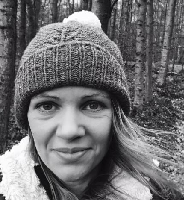Hannah Smith is Digital Archives Manager at Historic Environment Scotland. She attended IDCC 2020 with support from the DPC's Career Development Fund which is funded by DPC Supporters.
As part of my scholarship to attend the IDCC 2020 in Dublin, I was asked to write a blog post on the session ‘Long-term data preservation data lifecycle, standardisation process, implementation and lessons learned’ by Iolanda Maggio. The title of this session made me feel a little hesitant at my ability to follow the discussion, but it turned out to be one of the most relevant sessions to my own role and organisation.
Although the subject matter (space missions!) is very different to the content we manage at Historic Environment Scotland, the issues Iolanda discussed are very much what we are currently facing, and likely many institutions are as well. Iolanda used the Heritage Space Programme as a case study of the many issues we face in preserving digital data. The project itself seeks to manage and preserve satellite data from space missions that are no longer operational.
Iolanda started by sharing an experience many of us can relate to, when discussing the need for a digital preservation strategy within your organisation. “But we have a digital archive, that’s enough isn’t it?” Although she then went on to explain they have multiple copies of their digital archive, in different geographical locations and on different storage media, so she is already doing better than many of us!
Iolanda Maggio points out: "No one has talked about formats here! But formats are so important", carrying on to explain how Archivematica and their PRONOM integration helps the eesa in their preservation implementation #idcc20
— Micky Lindlar (@MickyLindlar) February 19, 2020
I recognised lots of my own work in Iolanda’s session, as she discussed the issues around file formats, open vs proprietary formats, file identification through DROID and PRONOM, and testing digital preservation software Archivematica. In HES we have been undertaking a programme of data cleansing prior to implementing our own digital preservation solution with Preservica and are looking to limit file formats on ingest so we can comply with archiving best practice.
Iolanda spoke of the time spent to create best practice documentation; glossaries, best practice on persistent identifiers, preservation workflows etc. Having this documented will ensure all that hard work doesn’t unravel in years to come and that digital preservation becomes a key consideration at the point of project planning. This has been a recurring theme across many of the conference sessions. Lots of us are likely aware there are single points of failure in our organisations, whether that’s in people or systems. Having clear ratified and maintained documentation will ensure we can preserve our preservation solutions!
The Career Development Fund is sponsored by the DPC’s Supporters who recognize the benefit and seek to support a connected and trained digital preservation workforce. We gratefully acknowledge their financial support to this programme and ask applicants to acknowledge that support in any communications that result. At the time of writing, the Career Development Fund is supported by Arkivum, Artefactual Systems Inc., CAE Technology, Formpipe, Libnova, MirrorWeb and Preservica. A full list of supporters is online here.










































































































































